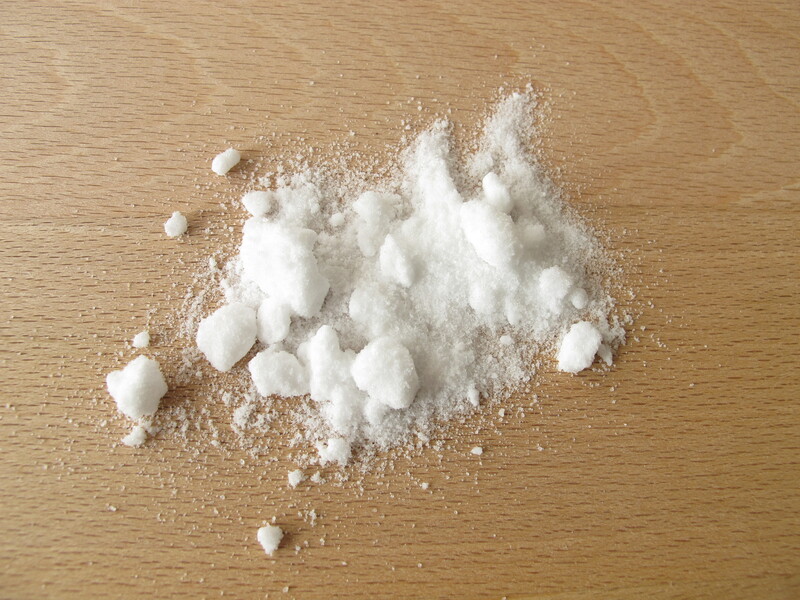Efficient Window Cleaning Methods You Need to Know
Posted on 11/09/2025
Efficient Window Cleaning Methods You Need to Know
Window cleaning is often considered a tedious and time-consuming chore, but with the right strategies and techniques, it can be transformed into a quick and satisfying task. Shiny, streak-free windows enhance both the appearance and value of your home or business. In this comprehensive guide, you will discover the most efficient window cleaning methods you need to know for sparkling results every time.
Why Efficient Window Cleaning Matters
Regular and effective window cleaning goes beyond mere aesthetics. Here are a few compelling reasons why clean windows should be a part of your maintenance routine:
- Boosts Curb Appeal: Gleaming windows significantly improve the first impression of any building.
- Enhances Natural Light: Clean glass lets in more sunlight, creating a brighter and happier environment.
- Prolongs Window Lifespan: Removing dirt and debris regularly prevents glass degradation and damage.
- Improves Indoor Air Quality: Dust and pollen build-up can contaminate the indoor air. Clean windows reduce these allergens.
- Early Problem Detection: Frequent cleaning allows for the early identification of window issues such as cracks, leaks, or damaged seals.

Preparation: What to Do Before You Clean Your Windows
An efficient cleaning job starts with proper preparation. Here's how to get ready for the task:
- Gather Necessary Supplies: Avoid wasting time by having all your tools ready. You'll need a bucket, squeegee, microfiber cloths, cleaning solution, scrubber or sponge, and a utility knife (for removing stubborn debris).
- Remove Dust and Cobwebs: Use a soft brush or vacuum around the window frame and sill to remove dust, dirt, and webs.
- Protect Surfaces: Place towels or drop cloths on the floor and windowsill to protect them from drips and spills.
- Choose the Right Day: Opt for a cloudy day. Direct sunlight can dry cleaning solutions too quickly, causing streaks.
The Best Window Cleaning Methods for Fast, Streak-Free Results
There are several approaches to efficient window cleaning--from traditional to high-tech. Below, we explore the most popular and effective methods for both homeowners and professionals.
1. The Traditional Squeegee Technique
Why it's efficient: The squeegee method has stood the test of time because it's effective and leaves minimal streaks.
- Make Your Cleaning Solution: Mix a few drops of liquid dish soap or a splash of vinegar with warm water in your bucket.
- Wet the Window: Use a sponge or scrubber to apply the solution, loosening dirt and grime.
- Squeegee in a Reverse-S Pattern: Starting from the top, drag the squeegee down the window in a continuous 'S' or side-to-side motion.
- Wipe the Blade: After each stroke, wipe the squeegee blade with a lint-free cloth to avoid transferring dirt back onto the glass.
- Detail the Edges: Use a clean microfiber cloth to dry and shine the edges and corners.
This classic method works for most windows and is often preferred by professionals for its fast, streak-free finish.
2. Microfiber Magic: Cleaning with Microfiber Cloths
Why it's efficient: Microfiber cloths attract and trap dust, dirt, and even grease, making them a top choice for modern window cleaning.
- Spray your glass cleaner onto the window.
- Wipe using a dry, high-quality microfiber cloth, working in a circular motion to lift dirt without scratching the surface.
- Buff the glass dry with a second clean microfiber cloth for a streak-free shine.
Tip: Wash microfiber cloths separately to keep them free of lint and residue.
3. The Vinegar and Newspaper Method
Why it's efficient: This old-school method is environmentally friendly and leaves windows sparkling.
- Mix equal parts of warm water and white vinegar in a spray bottle.
- Spray onto the window and wipe with crumpled newspaper in circular motions.
- Buff the glass with dry newspaper or a soft cloth to finish.
Newspaper doesn't leave lint behind, and vinegar cuts through residue, making this a simple and effective technique.
4. Water-Fed Pole System: Efficient for Large or High Windows
Why it's efficient: This system is ideal for cleaning multiple or hard-to-reach windows like those in apartment buildings or office complexes.
- The pole is fitted with a soft-bristle brush and connected to purified or deionized water via a hose.
- The brush and high-pressure water clean the surface, while the pure water dries without leaving spots or residue.
- Eliminates the need for ladders, making it both safe and quick.
5. Robotic Window Cleaners: The High-Tech Solution
Why it's efficient: Modern homes and offices with expansive glass panels benefit from robotic window cleaners. These devices use suction technology, advanced sensors, and cleaning pads to handle the job with minimal effort from you.
- Attach the robot to the window, start the device, and let it work.
- Some models can be operated via remote control or smartphone apps.
- Check reviews to ensure your window size and type are compatible with the model you choose.
Note: For optimal efficiency, pre-clean heavily soiled areas before deploying a robotic cleaner.
Homemade vs. Commercial Cleaners: What Works Best?
Choosing the right window cleaning solution is key to achieving a spotless result. Here's a quick comparison:
Homemade Window Cleaners
- Mix equal parts vinegar and water for a natural, streak-free clean.
- Add a drop of dish soap to cut through grease and smudges.
- Safe, inexpensive, and eco-friendly
Commercial Window Cleaners
- Available in spray bottles with specialized formulas for glass.
- May contain ammonia for extra cleaning power (take care with tinted windows).
- Convenient and effective for tough stains and job-site use.
No matter which solution you use, never clean windows with harsh abrasives or scouring pads as these can scratch the glass surface.
Expert Tips for Efficient, Streak-Free Window Cleaning
Here are several expert-recommended tips for making your window cleaning process even more efficient and effective:
- Start at the Top: Work from the top to the bottom, so dirty drips don't fall onto already-cleaned areas.
- Use Distilled Water: Tap water may contain minerals that leave residue and streaks. Distilled or deionized water ensures a spotless finish.
- Don't Overdo the Soap: Too much soap leaves a filmy build-up.
- Buff with a Dry Cloth: After cleaning, use a dry microfiber or chamois cloth to polish for extra clarity.
- Clean Both Sides: For truly gleaming windows, don't forget the interior side!
Dealing with Persistent Stains and Problem Areas
Sometimes, regular cleaning methods aren't enough for tough stains like hard water spots, paint, or adhesive residue. Here's how to address these challenges:
- Hard Water Stains: Apply a paste of baking soda and water to the stain, let it sit for 10-15 minutes, then scrub gently and rinse.
- Paint or Stickers: Use a razor blade or utility knife at a 45-degree angle to carefully scrape off the residue. Be cautious to avoid scratching the glass.
- Mold or Mildew: Mix one part bleach with three parts water. Apply to the affected area, scrub, and rinse thoroughly.
Safety Tips for Window Cleaning
- Use a Stable Ladder: For high windows, always set up a secure ladder on level ground.
- Wear Protective Gear: Gloves and safety glasses protect your hands and eyes from cleaning solutions and debris.
- Avoid Working Alone: For upper story windows, have someone assist you for extra safety.
- Don't Stretch or Overreach: Move the ladder as needed to access all areas comfortably.
Maintaining Sparkling Windows Year-Round
Regular maintenance saves you time and ensures your windows always look their best. Here's a quick checklist for ongoing window care:
- Dust and wipe window sills and frames weekly.
- Spot clean fingerprints and smudges with a damp microfiber cloth.
- Schedule deep cleaning for all windows at least twice a year.
- Inspect for cracks, leaks, and worn caulking during regular cleaning sessions.
Pro tip: Keeping screens clean and in good repair prevents dirt from being transferred to your clean windows.

Frequently Asked Questions About Efficient Window Cleaning Methods
How often should I clean my windows?
Ideally, windows should be deep cleaned at least twice per year, with light spot cleaning in between. Homes in areas with heavy pollen, pollution, or rain may require more frequent efforts.
Is it safe to clean windows with vinegar?
Yes, vinegar is a safe and natural option for both interior and exterior glass. However, avoid using it on aluminum window frames or on stone surfaces where the acidity could cause damage.
What is the fastest way to clean windows?
The squeegee technique, combined with a quality window cleaning solution, is one of the quickest and most effective ways to achieve streak-free results--especially when cleaning multiple windows.
Can I use paper towels to clean windows?
While paper towels are convenient, they may leave lint behind. For the best results, stick with microfiber cloths or newspaper.
Conclusion: Sparkling Windows, Less Effort
Achieving clean, streak-free windows doesn't have to be a struggle. With these efficient window cleaning methods, the right tools, and a systematic approach, you can maintain beautiful, gleaming windows year-round. Whether you prefer the precision of a squeegee, the convenience of modern technology, or the simplicity of household solutions, the key is to find a method that fits your needs and stick with a regular cleaning schedule.
Transform window cleaning from a dreaded chore into a quick, effective routine with these tips--so you can enjoy a brighter, more inviting space every day!




